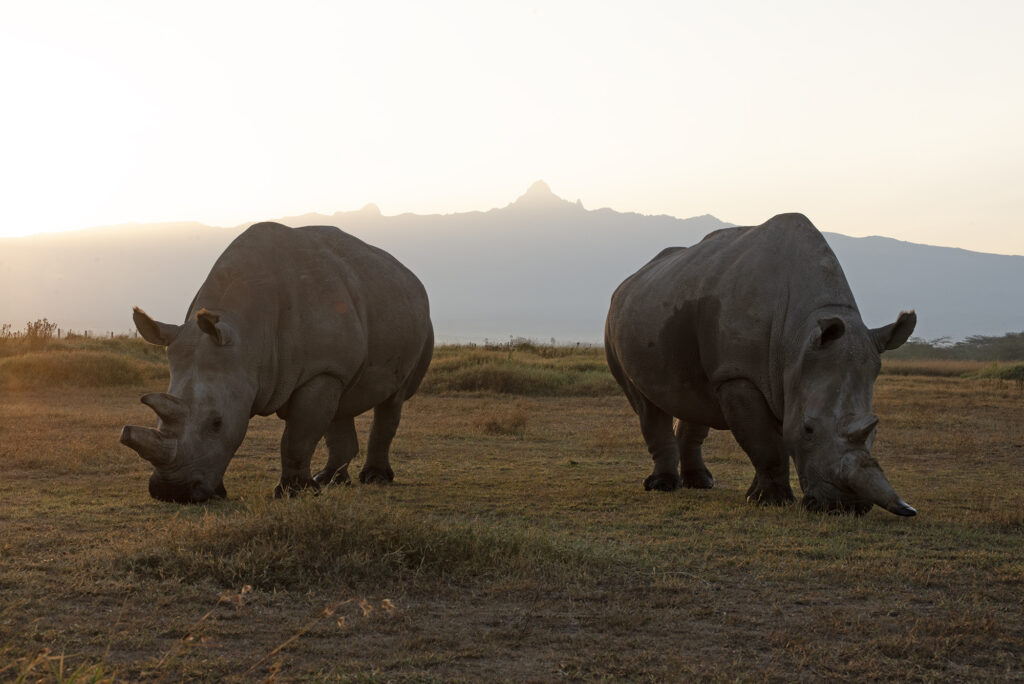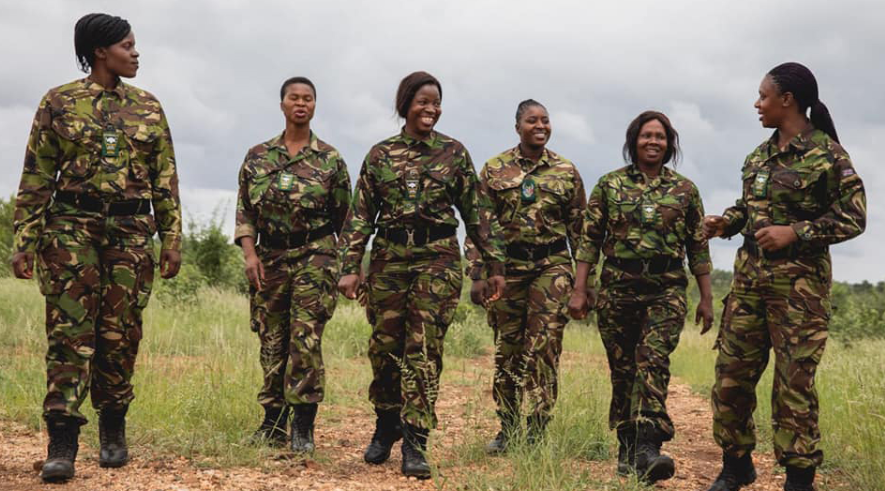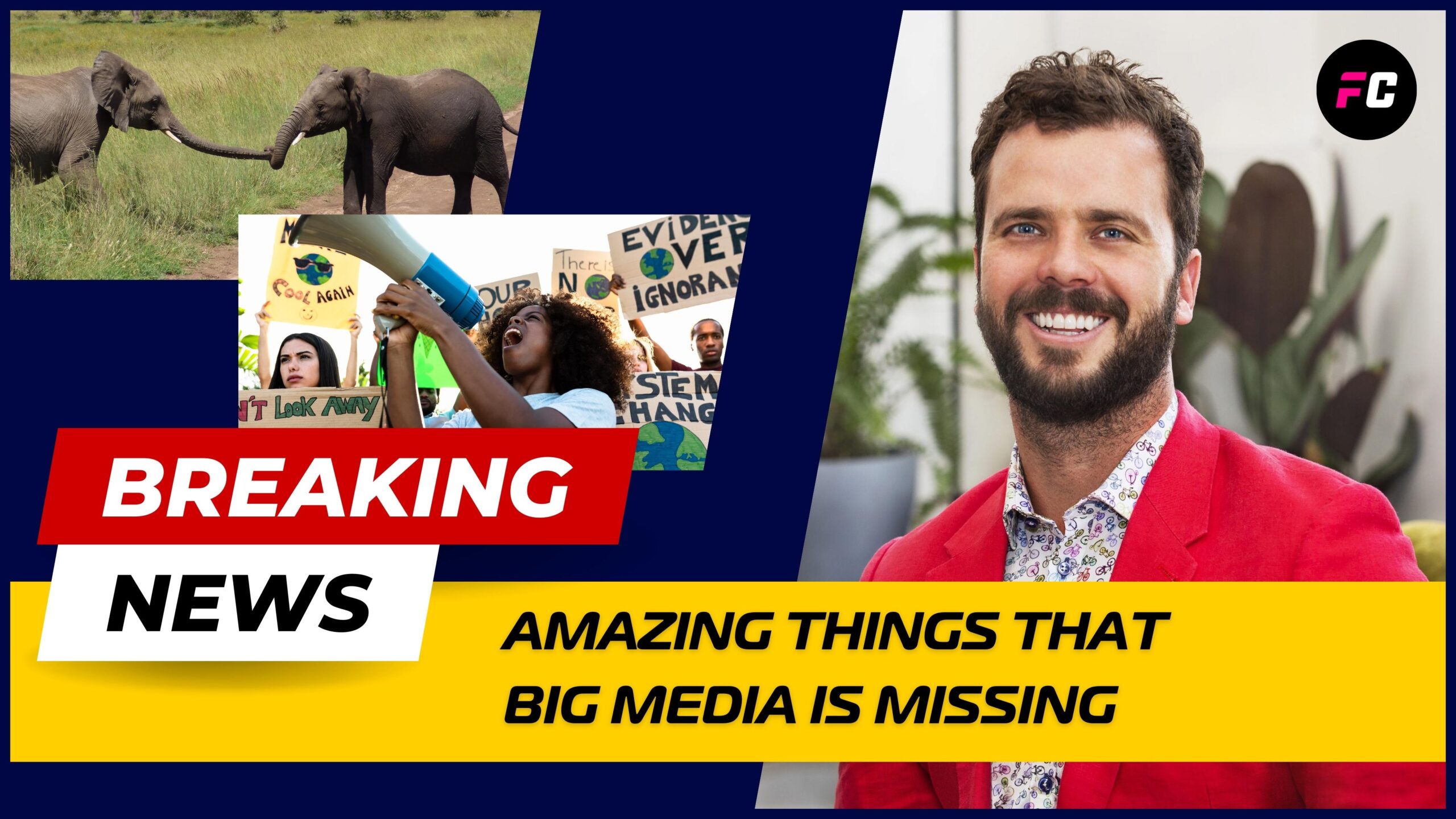By Mattheus Rikus Wessels
“Conservation isn’t a luxury. It’s a necessity.” – Simon Jones, Helping Rhinos
In the shadow of extinction, the rhino has become more than an icon of the African wilderness; it has become a mirror reflecting our own ethical choices, cultural beliefs, and ecological responsibilities.
As a guest In The GoodViral Podcast, hosts Anastasia and Demian sit down with Simon Jones, founder of Helping Rhinos, to unpack a conservation crisis with layers as complex as its horn is deceptively simple. With rhino poaching surging and habitat shrinking fast, Simon shares a frontline view on what it takes to keep these ancient giants alive.
The War on Rhinos
In 2024, 420 rhinos were killed in South Africa alone. That’s more than one a day.
“Rhino poaching isn’t slowing down. It’s evolving. And it’s still pushing these animals toward extinction in our lifetime.” – Simon Jones

Rhino poaching, particularly in the Greater Kruger National Park in South Africa, has caused a severe decline in rhino numbers, with more than 7,000 killed over the past decade. This crisis is driven by the high demand for rhino horns in parts of Asia, resulting in the deaths of adult rhinos, including mothers, and leaving many calves orphaned.
Poachers specifically kill rhinos for their horns only, which are made not of bone but keratin, the same protein found in human hair and fingernails. Despite being medically useless, rhino horn is still prized in traditional Chinese and Vietnamese medicine and sold as a luxury good in black markets. At one point, it was worth more per kilogram than gold or heroin.
Today, black market prices have dropped to about $18,000 per kilo! Still absurd for what amounts to glorified fingernails.
In 2024, a Mozambican court sentenced notorious poaching syndicate leader Simon Ernesto Valoi to 27 years in prison for crimes including financing terrorism, wildlife trafficking, and money laundering, marking a major victory for anti-poaching efforts. His arrest in 2022 followed a coordinated intelligence operation, with rhino horns and evidence of a broader crime network seized.
The conviction was welcomed by SANParks, as Valoi’s operations contributed significantly to rhino losses in Kruger National Park. Regional ranger Richard Sowry warned that ongoing poaching could collapse Kruger’s ecosystem and economy, affecting biodiversity, air and water quality, and thousands of livelihoods. Despite efforts utilizing anti-poaching dogs and helicopter patrols, rhino poaching remains a crisis, with 451 rhinos killed in 2021 alone. Snaring, poisoning, and armed incursions continue to threaten the species, with over 7,000 snares removed in 2023, highlighting the scale and brutality of the illegal trade.

Not Just a Rhino Problem
This is more than an animal welfare issue. Rhino poaching fuels organized crime. It funds the same syndicates that drive human trafficking, arms smuggling, and narcotics.
“Illegal wildlife trade is the fourth-largest criminal industry in the world. And rhino horn is a key part of that.” – Simon Jones
It’s not just about the rhino. When you protect rhinos, you protect everything that shares their ecosystem: elephants, leopards, lions, birds, insects, and even the dung beetle.
“If you’re protecting rhinos… you’re making the entire area safe for every other species.”
The impacts of poaching ripple far beyond the immediate loss. Scavengers like vultures, jackals, and hyenas are often killed when they feed on poisoned rhino carcasses–a tactic poachers use to avoid alerting authorities. Snares and toxins set for rhinos can also harm elephants and other herbivores, while predators such as lions suffer from secondary poisoning. Even insects and microorganisms, which rely on the dung of large grazers like rhinos, are affected. The death of a single rhino can compromise the health of an entire ecosystem, revealing how deeply interconnected species are within the savannah environment.
The Hidden Threat: Habitat Loss
While poaching gets headlines, Simon says the greater long-term threat is a silent one: habitat collapse.
“We’re running out of space. Even if we stopped poaching tomorrow, rhinos would still be at risk.”
Most rhinos today live in fenced reserves. These areas are secure, but finite. Many are now at or beyond their ecological carrying capacity. Without room to roam, rhinos fight, fail to breed, or die prematurely. And finding new land means relocating entire communities and restoring degraded habitat, tasks that require years of negotiation, restoration, and funding.
“We’ve worked with villages to relocate and repurpose land. But that takes years, and the risk of conflict is high.”
The Orphans Left Behind
Poaching doesn’t just kill adults. It leaves behind calves.
Simon works with Zululand Rhino Orphanage, where baby rhinos abandoned or orphaned after their mothers were poached are rehabilitated and released into the wild.
“We’ve found calves curled up inside their mother’s carcass trying to stay warm.”
Raising a rhino takes three to four years. They require bottle-feeding every two hours, bonding with a human caregiver, and then slowly learning to distrust humans again so they won’t approach one later, and get shot.
“Every rhino counts. And every orphan is a testament to what’s at stake.”

Women on the Front Lines
Helping Rhinos supports initiatives like The Black Mambas, the world’s first all-female anti-poaching unit. These 36 women patrol the Greater Kruger area unarmed, armed instead with community relationships and conservation education.
“They’re not just protecting rhinos. They’re changing the narrative of who belongs in conservation.”
Helping Rhinos also supports conservation education which reaches over 11 schools and provides early conservation literacy, meals, and pathways to employment.

The Black Mambas are inspiring a new generation of conservationists through their Bush Babies program, which educates children aged 12 to 15 about wildlife behavior, ecology, and the importance of environmental protection. During school holidays, these students visit nearby reserves to witness firsthand the animals they’ve studied—an experience that fosters a powerful emotional bond with nature. Since its launch in 2015, the program has expanded to ten schools in the Greater Kruger area.
Beyond their conservation work, the women of the Black Mambas, many of whom are mothers and primary breadwinners, have become role models in their communities. In a field traditionally dominated by men, they are challenging expectations and proving that women can lead both in their families and on the front lines of environmental protection. “To be a woman in this role is like being a queen of the jungle,” says 25-year-old Leithah Mkhabela. For the unit, empowering women is just as important as safeguarding wildlife.
A Story of Supply and Demand
While Helping Rhinos focuses on protection, Simon knows the fight won’t be won without demand reduction in Asia.
“We’ve funded local organizations in Vietnam and China to educate future generations. It has to come from within the culture, not from us telling them what to believe.”
Rhino horn isn’t just believed to cure ailments. It’s a status symbol. A way to say, “I can afford this.” Simon compares it to offering a ride in a Ferrari, not because you want to, but to show you can.
The good news? Fashion changes. And so does culture.
“We’re already seeing price drops. That’s promising. But this is a 10-, 20-year strategy: not a quick win.”
A Slower Rebirth
Unlike lions or warthogs, rhinos reproduce slowly. A white rhino’s pregnancy lasts 16 months. One calf. Every 3–5 years. If you kill a female rhino today, you’re not just killing her; you’re halting a decade of population growth.
“We cheer when a baby rhino is born. We mourn deeply when one is lost.”
That’s why every poaching event is devastating. The species simply can’t reproduce fast enough to keep up.

From Corporate Cards to Conservation
Simon spent 24 years at American Express. He now works for a fraction of that salary, by choice.
“A plastic payment card was never going to ignite the same passion. Rhinos did.”
He began as a volunteer, founded Helping Rhinos after a poaching incident in 2012, and has since grown it into a globally respected conservation force. But it hasn’t come without cost.
“My wife and I have made sacrifices. And the emotional toll of losing rhinos we tried to save, it cuts deep.”
Yet, amidst these profound challenges, there are beacons of hope. The unwavering dedication of individuals like Simon, the inspiring resilience of the Black Mambas, and the growing global awareness are creating a powerful ripple effect. Every rescued orphan, every poacher brought to justice, and every child educated about conservation builds a foundation for a future where rhinos can thrive. This shared commitment is the very heart of the solution, reminding us that collective action can overcome even the most daunting threats.
How You Can Help
You don’t need to move to Africa to save rhinos.
- Visit helpingrhinos.org to learn, donate, or adopt a rhino
- Watch the Oscar-nominated short film The Last Ranger
- Follow on Instagram or LinkedIn
- Share what you’ve learned. One conversation can start a chain reaction.
“This might be an African problem, but it’s an internationally created one. And it has to be solved internationally.”
Final Thoughts
“Conservation is about protecting life. It’s about securing a future for species that are critical to our planet’s ecosystem.”
In saving rhinos, we are protecting not just a species, but the integrity of entire ecosystems, the dignity of communities, and the future of wildness on Earth.
Let’s not fail them on our watch.
Listen or Watch the Full Interview
Listen to the full interview on Spotify, Apple Podcasts, or watch it on YouTube.



